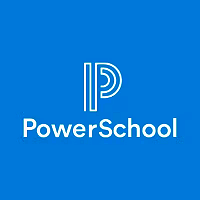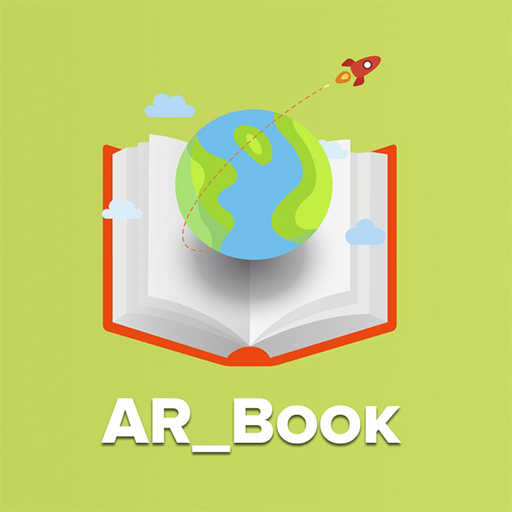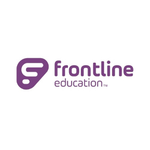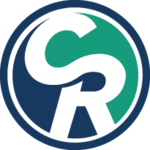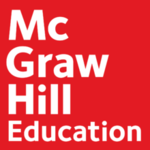What Is K-12 Software?
K-12 software is a broad word that refers to a variety of educational technology tools and programs intended specifically for use in kindergarten through 12th grade schools. It includes a wide variety of software programs designed to meet the specific demands of students, teachers, and administrative staff at all levels of the educational system. At its foundation, K-12 software seeks to improve and support the learning process by incorporating technology in novel ways.
This could range from digital learning platforms and interactive whiteboards to virtual reality simulations and adaptive learning tools. One of the primary advantages of K-12 software is its capacity to engage and motivate children while also offering tailored learning experiences. These tools can track students' progress, detect knowledge gaps, and provide focused training to help them achieve their full potential.
K-12 software provides teachers with a range of materials and tools to help them organize lessons, grade pupils, and communicate with parents. It can also evaluate student data to spot trends and make informed educational decisions. On the administrative side, K-12 software may streamline activities like enrollment, scheduling, and record-keeping, allowing administrative staff to focus on more critical obligations.
What Are The Recent Trends In K-12 Software?
In recent years, there has been a substantial trend toward technology in the education sector, with K-12 software being no exception. With the development of online learning and the need for more streamlined and effective classroom management, there has never been a greater demand for new software solutions in the K-12 industry.
As a buyer, you must stay up to date on the latest developments in K-12 software in order to make an informed and productive purchasing decision for your school or organization.
1. Personalized Learning: One of the most notable recent trends in K-12 software is the emphasis on personalized learning. With the awareness that each kid has distinct learning requirements and styles, K-12 software has evolved to deliver tailored learning experiences. This comprises adaptive learning platforms that tailor the curriculum to the student's performance, as well as personalized learning management systems that track individual progress and provide focused feedback for improvement.
2. Artificial Intelligence (AI): AI technology has made its way into the K-12 education sector, with many software solutions now including AI-powered features. These include smart grading systems and virtual tutors who provide individualized assistance to students. AI-powered software can evaluate data and make adjustments in real time, allowing teachers to discover areas where pupils may require additional assistance.
3. Gamification: Engaging pupils in learning can be a constant issue, but K-12 software has discovered a solution in gamification. Many software solutions now include gamification features such as points, leaderboards, and prizes to make learning more enjoyable and participatory for students. This not only keeps kids interested, but also fosters healthy competition and drives them to learn.
4. Mobile Accessibility: With the increased use of mobile devices, K-12 software is becoming increasingly available on these platforms. Mobile apps and browser-based software enable students and teachers to access learning materials and participate in classroom activities from any location, at any time. This has made learning more accessible and adaptable, particularly in remote and hybrid learning situations.
5. Data Analytics: Data-driven decision-making is increasingly important in the education sector, and K-12 software has followed suit. Educators can gain significant insights into student performance, attendance, and engagement by incorporating data analytics tools into software systems. This enables teachers to make more informed judgments that improve teaching techniques and student learning outcomes.
Benefits Of Using K-12 Software
K-12 software refers to a set of digital tools and platforms built specifically for use in the education sector, ranging from kindergarten to 12th grade. These software solutions provide numerous features and benefits, making them an indispensable resource for educators, schools, and districts. As a buyer, investing in K-12 software can transform students' learning experiences while also increasing your educational institution's overall efficiency and effectiveness.
Here are some of the main advantages of using K-12 software:
1. Personalized Learning: One of the most significant benefits of K-12 software is the potential to give students with personalized learning experiences. These software solutions use adaptive learning technology to analyze each student's specific learning needs and capabilities and build tailored lesson plans and activities. This enables students to learn at their own pace and in a manner that best suits their individual learning style, resulting in enhanced academic success.
2. Streamlined Administrative Chores: Administrative chores like scheduling, grade tracking, and attendance monitoring can be time-consuming and irritating for teachers. K-12 software automates these processes, giving teachers and staff more time to focus on other vital duties. Furthermore, these software solutions improve data administration, making it easier to monitor student development and provide detailed reports.
3. Improved Communication And Collaboration: Effective communication and collaboration are critical to the success of any educational organization. K-12 software provides a variety of features that improve communication between teachers, students, and parents. These include message platforms, online discussion boards, and virtual schools. Using these tools, educators can communicate with students and parents, offer critical information and resources, and build a collaborative learning environment.
4. Cost-Effective: While investing in K-12 software may appear to be a substantial cost at first, it can ultimately save educational organizations money. These digital solutions eliminate the need for paper-based materials like textbooks and worksheets, lowering printing and distribution expenses. Furthermore, with increased efficiency and productivity, schools can reduce administrative costs and reallocate resources to other critical areas.
5. Available Anytime, Anywhere: In today's digital age, students are no longer limited to classroom instruction. K-12 software allows students to access instructional materials and complete homework remotely, from any device with an internet connection. This allows students to learn at their own pace, removes learning hurdles, and encourages continual education.
Important Factors To Consider While Purchasing K-12 Software?
When acquiring K-12 software, there are numerous critical elements to consider in order to make the best option for your school or district. These variables include anything from the software's features and capabilities to its price and compatibility.
As a buyer, you must carefully consider each component before making a purchase to ensure that you are investing in software that matches the needs and goals of your educational institution.
1. Educational Goals And Needs: The first step in selecting K-12 software is determining your school's or district's educational objectives and needs. This will help you limit down the range of available software solutions and choose one that meets your needs. For example, if you want to increase student engagement, search for software that includes interactive learning activities.
2. Ease Of Use: Consider how easy the software is to use. Teachers and students in a hectic school setting require software that is simple to use and intuitive. Complicated and difficult-to-use software can impede learning and waste instructional time. Before making a decision, ensure that the software's interface and navigation work well.
3. Compatible With Existing Systems: Make sure the K-12 software you choose is compatible with the systems already in place at your school or district. This comprises hardware, operating systems, and various software programs. The last thing you want is to invest in software that doesn't work with your existing technology and causes technical issues.
4. Privacy And Security: When acquiring educational software, privacy and security should be prioritized. This is especially critical when working with sensitive student information. Make sure you properly examine the software's security measures and data protection policies to guarantee that your pupils' information is secure.
5. Customization And Adaptability: Each educational institution has a distinct set of needs and criteria. Look for K-12 software that has customization and adaptation choices, so you may tune it to your individual requirements. This ensures that the software can develop and expand alongside your school or district.
6. Training And Assistance: Investing in K-12 software entails providing training and assistance to your teachers and staff. Look for software companies that give extensive training and continuous support to help instructors make the most of the product's features and capabilities.
7. Cost: Finally, think about the cost of the software. While it is critical to stay within your budget, keep in mind that less expensive solutions are not always the most effective or efficient. When making a decision, keep the long-term benefits and ROI in mind. By carefully evaluating these critical aspects, you can make an informed selection when selecting K-12 software for your school or district. Remember to include important stakeholders in the decision-making process and conduct extensive research on all available options to determine the greatest fit for your educational goals and needs.
What Are The Key Features To Look For In K-12 Software?
As technology advances, educational institutions increasingly rely on K-12 software to improve their learning environments. With so many options available, it can be difficult for purchasers to choose the best software for their school or district.
To make an informed decision, the following are the essential elements to look for in K-12 software:
1. User-Friendly Interface: The software should have an intuitive interface that is simple for both teachers and students to use. It should also include customisable features to match the specific requirements of your school or district.
2. Comprehensive Content Library: A good K-12 program should provide a wide selection of educational content, such as movies, interactive games, and multimedia resources. This guarantees that students have access to educational resources that are both engaging and interactive.
3. Assessment Tools: Look for software that incorporates assessment tools, such as quizzes and tests, to help you track student progress and identify areas for improvement. This tool enables teachers to personalize their instruction to the needs of specific students.
4. Cooperation Features: K-12 software should allow for cooperation between teachers and students, as well as among students themselves. Look for elements like discussion boards, group projects, and shared documents that encourage teamwork and peer learning.
5. Mobile Compatibility: With the rise of remote learning and the usage of mobile devices in the classroom, it is critical to select software that works with a variety of devices and operating systems. This makes it easy for students to use the program and continue their education from anywhere.
6. Statistics Tracking And Reporting: A reliable K-12 program should be able to collect and report statistics on student development, attendance, and general performance. This feature enables educators to track student success and make data-driven decisions.
7. Technical Support And Training: When investing in K-12 software, it is critical to select a vendor who provides technical assistance and training to ensure that the program is seamlessly integrated and used inside your school or district.
Why Do Businesses Need K-12 Software?
K-12 software has emerged as a crucial tool for education-related enterprises. With the steady growth of technology, traditional methods of managing educational institutions have become obsolete and ineffective. This is where K-12 software comes into play, providing a comprehensive solution for managing many areas of the educational system, such as administrative activities and student academic progress tracking.
One of the primary reasons that businesses require K-12 software is to streamline administrative operations. This program enables educational institutions to automate operations such as admissions, student enrollment, and fee administration, considerably reducing administrative strain and providing important time for teachers and staff. Furthermore, the program provides a consolidated platform for managing student data, attendance, and academic records, allowing for simpler access and updates.
Another important feature that makes K-12 software vital for organizations is its capacity to improve communication and collaboration among all stakeholders. The program, which includes features such as parent-teacher communication, online grade books, and discussion forums, connects teachers, students, and their parents. This increases involvement and transparency, resulting in a more efficient and effective learning environment.
Furthermore, K-12 software assists organizations in controlling and tracking students' academic development. This software enables teachers to monitor students' performance and identify areas for improvement. It also delivers comprehensive reporting and analytics, allowing educational institutions to make data-driven decisions that improve education quality.
Furthermore, the program includes a number of learning tools and resources to help pupils study more effectively. Virtual classrooms, online quizzes, and interactive learning materials all contribute to a more engaging and successful learning experience for students. As a result, businesses can ensure that their kids receive a high-quality education that will equip them for future success.
How Much Time Is Required To Implement K-12 Software?
The time required to implement K-12 software varies based on the specific program and the demands of your school or district. While the precise timing will vary every company, there are some broad recommendations to assist you plan for the implementation process. The average implementation time for K-12 software is between three months and a year.
The length of time will be determined by the software's complexity, the size of your school or district, and the level of customization necessary. The initial phase in the implementation process is usually planning and preparation. This includes evaluating your specific software needs and goals, as well as determining the resources and team members required.
This phase might last anywhere from one to two months, depending on the level of detail and research required. Next, the program must be installed and customized to fit your school or district's specifications. This stage can take 2-3 months because it include configuring the software, connecting it with current systems, and ensuring that all data is properly moved.
After installing the software, the following stage is training. It is critical to ensure that all staff members, from teachers to administrators, are familiar and proficient with the program. Training can last anywhere from one to two months, depending on the software's complexity and the number of users. Following training, there will be a period of testing and troubleshooting to address any bugs or difficulties that may develop.
This may take 2-4 weeks, depending on user feedback and the software provider's responsiveness. Finally, the software will be completely implemented and ready for usage. However, it is critical to continue monitoring and evaluating the software's performance to ensure that it is achieving the anticipated results and making any necessary improvements. This continuing process can take anywhere from three to six months.
What Is The Level Of Customization Available In K-12 Software?
K-12 software is instructional software built specifically for use in schools from kindergarten to 12th grade. These software packages include a variety of tools and resources for improving teaching and learning, including as interactive exercises, multimedia content, and assessment capabilities. The level of customization that K-12 software offers sets it apart from other forms of educational software.
The level of customisation possible in K-12 software varies significantly depending on the product and vendor. However, most K-12 software provides a high level of customisation, allowing you to adjust the curriculum, activities, and assessments to each particular student's needs. Customization options in K-12 software may include adaptive learning, which allows the program to modify the complexity of tasks based on a student's ability level.
This ensures that students are suitably challenged and able to advance at their own pace. Another facet of customisation is the ability to tailor the program to specific curriculum requirements or learning objectives. Many K-12 software suppliers collaborate closely with educational groups to ensure that their programs are aligned with state and national standards, making them easier for teachers to include into their lesson plans.
Some K-12 software also includes the ability to construct personalized learning paths for kids. This means that teachers can adjust specific activities and materials to each student's individual skills and learning needs, resulting in a more personalized learning experience. Many K-12 software solutions allow teachers to customize their settings in addition to students'.
This may include the ability to develop and administer custom tests and tasks, as well as tracking and reporting tools to monitor student progress. Overall, the level of flexibility provided by K-12 software is an important consideration to consider when selecting a package for your school. Whether you want to provide a highly individualized learning experience for children or tailor curriculum and exams to your specific needs, there is most likely a K-12 software product that can match your demands.
Which Industries Can Benefit The Most From K-12 Software?
K-12 software, commonly known as educational software, is intended for use in kindergarten through 12th grade (K-12) education settings. It includes a wide range of digital tools and software that help with teaching, learning, and general school management. While the primary goal of K-12 software is to improve kids' educational experiences, it can also benefit a variety of companies and stakeholders in the education system.
The following industries stand to benefit the most from K-12 software:
1. Primary And Secondary Schools: The obvious industry that stands to benefit the most from K-12 software is primary and secondary education. From small private schools to major public school districts, K-12 software may help the entire educational system. These schools can employ software tools for lesson planning, attendance tracking, grading, and managing student data. Furthermore, K-12 software can provide students with educational resources and interactive learning activities, increasing the engagement and effectiveness of the learning experience.
2. EduTech Companies: The increasing need for digital learning aids has resulted in the growth of educational technology (EdTech) enterprises. These companies specialize in creating and delivering K-12 software solutions. EdTech businesses that invest in K-12 software can meet the needs of schools and students while also growing their market reach and profitability.
3. Teacher Training Programs: K-12 software can also be useful in teacher training programs. These programs can use simulation software to teach aspiring teachers how to efficiently manage a classroom, produce compelling lesson plans, and incorporate technology into their teaching. This can assist teachers prepare for the problems of today's classrooms while also improving overall educational quality.
4. Educational Publishers: Traditional educational publishers can benefit from using K-12 software in their curriculum materials. With the growing popularity of online learning, publishers may now offer digital copies of their textbooks and learning resources, making them more accessible and easy for students. They can also create interactive and immersive educational content to improve students' learning experiences and increase market competitiveness.
5. School Administrators: K-12 software can also help school administrators manage finance, scheduling, and communication with parents and stakeholders. K-12 software, with features like as automatic reminders, online payment systems, and real-time data analysis, can assist administrators in streamlining work and increasing productivity.
Conclusion
To summarize, investing in K-12 software can considerably benefit schools and educational institutions by reducing administrative duties, improving stakeholder communication, and offering a more dynamic and individualized learning experience for kids. When selecting K-12 software, it is critical to analyze the institution's specific needs and goals, as well as the features and functionality provided by the software.
A careful evaluation and comparison of several possibilities can help you make an informed selection. Furthermore, ensuring that the software vendor provides dependable customer support, training resources, and data security measures is critical for a smooth adoption. With the proper K-12 software, schools can increase their overall efficiency and effectiveness, resulting in greater student outcomes. Overall, a comprehensive and individualized approach to selecting and adopting K-12 software can benefit both instructors and kids.








